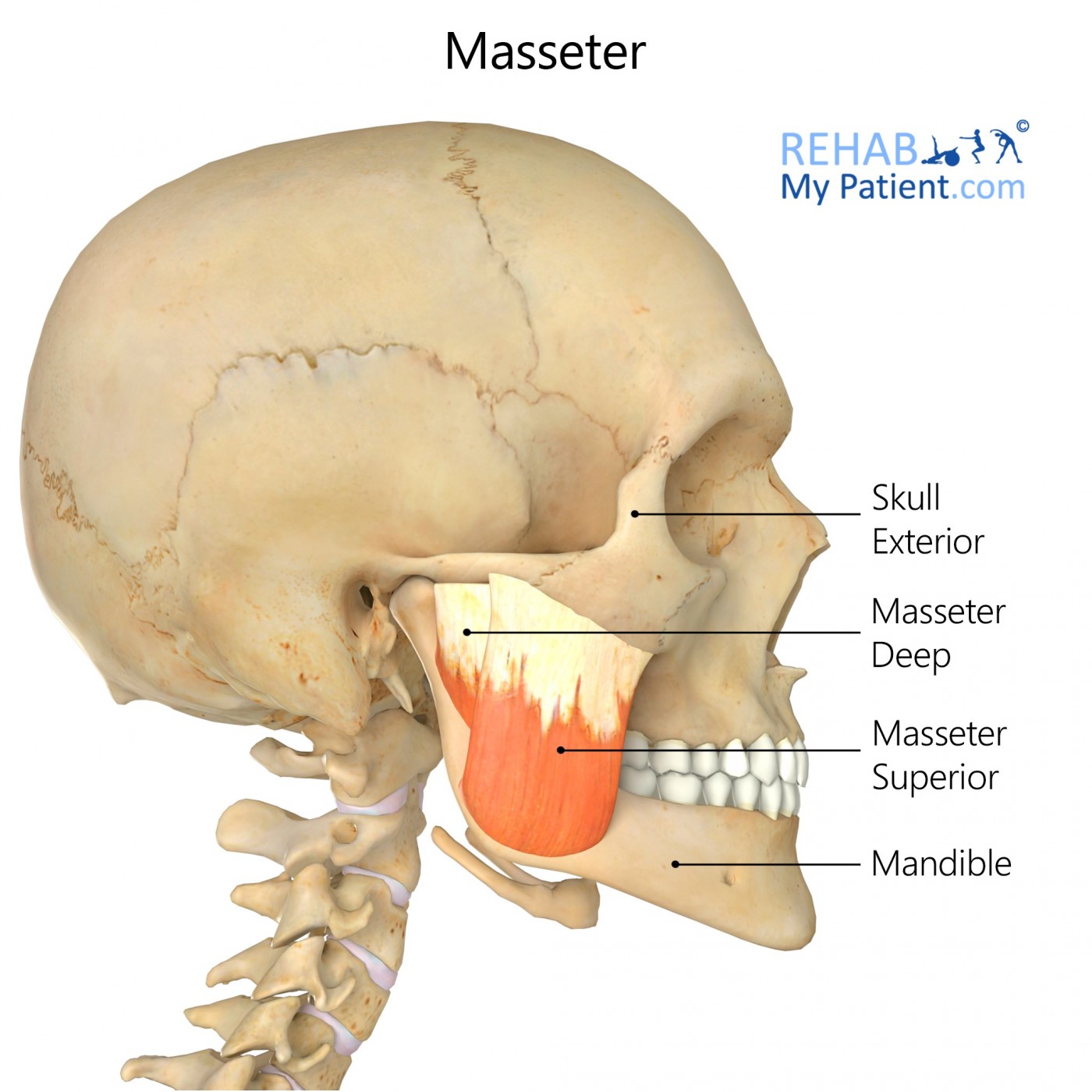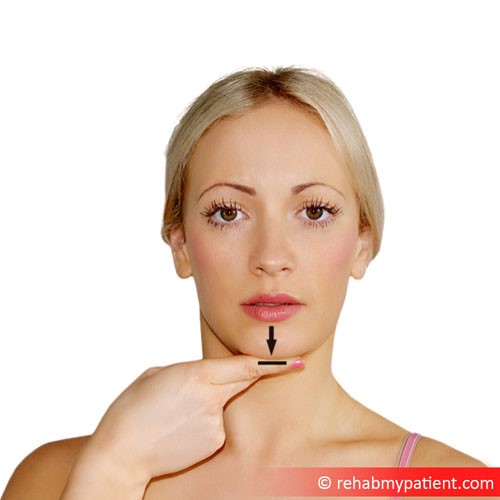Masseter
Posted on 28th Jul 2020 / Published in: TMJ

General information
The masseter muscles are located on either side of the jaw.
Literal meaning
The muscle that chews.
Interesting information
The masseter is a quadrilateral skeletal muscle that has the primary function of chewing.
Temporomandibular joint disorder (TMJ) often occurs due to the overuse of the masseter or other various surrounding muscles. The most common reasons TMJ arises include gum chewing, teeth grinding or clenching, certain types of arthritis, and stress. Symptoms include jaw pain, moderate to severe headaches, clicking or popping of the jaw, or a jaw that gets stuck in the process of opening or closing. Treatments of symptoms include jaw exercises, keeping the mouth closed but the teeth apart when not eating or speaking, cold packs to reduce swelling, and facial massages. If symptoms such as headaches turn into migraines, it may be time to see a dentist or doctor. The cause of TMJ in this case may be teeth grinding, which a dentist can easily remedy by creating a custom mouth guard to wear during sleep. Even though TMJ is not normally a serious condition, it may be important to see a doctor or dentist to rule out arthritic conditions or degenerative joint disorders.
Origin
Zygomatic arch.
Maxilla.
Insertion
Coronoid process.
Ramus of mandible.
Cementomaxillary tendon.
Cementomandibular tendon.
Function
Elevation and protraction of mandible.
Nerve supply
Mandibular nerve.
Blood supply
Masseteric artery.

Relevant research
Succinylcholine is a common agent used in hospitals for performing emergency intubations or rapid sequence intubations (RSI). However, documentation shows that in rare cases succinylcholine can trigger masseter spasms or “jaws of steel”. These infrequent cases normally have documentation showing that it is because a combination of succinylcholine and another drug, such as halothane or thiopental, is the actual cause. A case study shows that a 20-year-old woman developed the “jaws of steel” after a treatment of succinylcholine with no use of precipitating agents for an RSI. To regain control of the severe masseter spasm, a retrograde endotracheal intubation helped to alleviate the closed airway. The patient had no known allergies and no issues with her medical history that would cause a masseter spasm. In vitro cases show that there are no indications that succinylcholine, by itself, will cause spasms. Masseter spasms are potentially fatal occurrences. The importance of the case study is that if succinylcholine can cause a life-threatening masseter spasm, then it should not be used in common procedures like RSI.
Gill, M, Graeme, K, Guenterberg, K. (2005). “Masseter spasm after succinylcholine administration”. The Journal of Emergency Medicine. 29(2): 167-171.
Masseter exercises

Open and close
Begin by resting the chin on the tip of the thumb. Open mouth while applying light consistent pressure with the thumb. Continue holding the mouth open while applying pressure for ten seconds and then close the mouth. Repeat this exercise five times daily.

Side-to-side Exercise
Place a pencil or pen in the mouth and hold between teeth. Slowly move the jaw from one side to the other. Repeat this exercise ten times a day.
Sign UP
Sign up for your free trial now!
Get started with Rehab My Patient today and revolutionize your exercise prescription process for effective rehabilitation.
Start Your 14-Day Free Trial